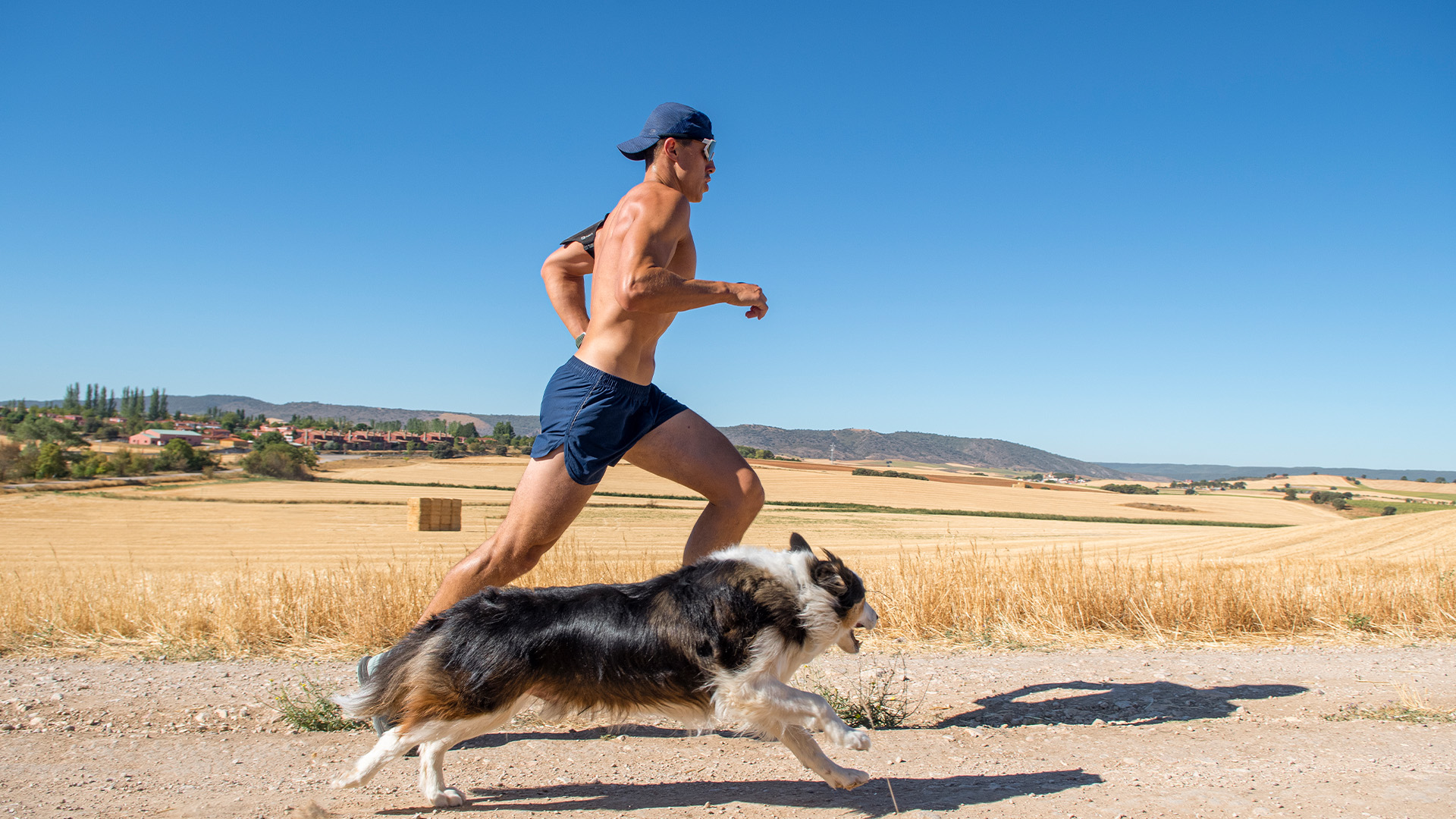Why are humans good long-distance runners?
Walking upright has allowed us to become some of the best distance runners in the world, but at the expense of speed.

Death Valley's Badwater 135 is said to be the world's most extreme footrace, traversing 135 miles (217 kilometers) from the lowest elevation in North America to the highest elevation in the continental United States. On top of that, it's held in July, when temperatures along the route can rise above 120 degrees Fahrenheit (49 degrees Celsius).
Very few animals on Earth could survive such a romp, and yet, roughly 100 people sign up each year to pit their strength and endurance against the harshness of the desert. Distance running, it turns out, is where humans excel compared with other species, even if our two-leggedness makes us about half as fast as other mammals of similar size, on average. People have successfully outrun many species over distance that would otherwise smoke us in a sprint, including dogs, horses and cheetahs.
So what is it about our bodies and our physiology that allows us to undertake such long and arduous runs?
One hypothesis to explain our distance running prowess, bolstered by a handful of bones found in Central Africa in 2001, suggests that roughly 7 million years ago, our ape-like ancestors left the trees to scavenge on the ground. At first, their movement was inefficient. But over several million years, as the climate warmed and open savannas dominated the landscape, early hominids evolved bipedal walking. Shifting to two legs gave them more height to scan tall grasses for danger and allowed them to cover twice the distance using the same amount of energy.
From there, our ancestors developed adaptations for running "literally from toe to head," said Daniel Lieberman, a human evolutionary biologist at Harvard University who focuses on locomotion. "There's no part of our body that running doesn't touch."
Related: Why do we bend our arms when we run?
According to Lieberman, our toes are short so they don't break while running. And in general, our lower body has larger joints, tendons and muscles than our upper body does to absorb the forces we generate at speed. The Achilles tendon, the IT band (a thick band of tissue running down the outside of the leg) and the arch of the foot all function as springs, storing elastic energy and returning some of it to us as we stride. Beefy muscles in our rears keep our upper body from falling forward, and our swinging arms stabilize our heads. Unlike apes, we have a flexible spinal column that allows us to twist our hips and shoulders and decouple them from our head so we can keep our gaze directed forward.
Get the world’s most fascinating discoveries delivered straight to your inbox.
But perhaps the biggest adaptations that set humans apart deal with our ability to dissipate heat. Our tall, upright bodies create a lot of surface area for cooling, and the ability to breathe from both the nose and mouth helps dump heat as well. Humans are also one of the only species with the ability to sweat, and without thick fur, our sweat can easily evaporate from our skin, cooling us down.
All of these adaptations led humans to adopt what's known as persistence hunting long before the advent of early weapons. Rather than sprinting to chase down prey, hunters likely followed their quarry for miles until the animal succumbed to exhaustion. Other animals do this too, but none can persistence hunt during the day or in hot climates.
"But if you look around the world, there are hundreds of examples of people [persistence hunting] in the ethnographic literature until fairly recently," Lieberman said, adding that the so-called runner's high experienced during long bouts of exercise may also be an adaptation to hunting. "It's a heightening of sensory awareness, when your sensory cues become more intense, and that would unquestionably help hunters."
Hunting gave humans access to more energy, which freed our brains to grow larger, from about 40 cubic inches (650 cubic centimeters) 2 million years ago to about 92 cubic inches (1,500 cubic cm) just before the start of the agricultural revolution. In turn, our brains have co-evolved alongside, and fed into, our ability to run and hunt, said Missy Thompson, a neuromechanics biologist at Fort Lewis College in Colorado.
Our spines have what's known as central pattern generators that create and regulate basic movements, such as walking or running, pulling in sensory information from our joints and the bottoms of our feet to keep us moving forward. This form of automation frees the brain to focus on energetically expensive tasks.
"Once, that might have meant dealing with all the sensory input you have while tracking an animal," Thompson told Live Science. "But today it might look like walking or running while looking at your phone."
The advent of technology, starting with spears and bows and moving into the modern amenities of today, means that humans no longer need to run long distances in order to survive, "and yet it's definitely something that our bodies are still made to do," Thompson said. Research has shown that running lowers cholesterol and increases bone density. "In moderation, it's just one of the most simple and best forms of cardiovascular exercise that we can do."

Amanda Heidt is a Utah-based freelance journalist and editor with an omnivorous appetite for anything science, from ecology and biotech to health and history. Her work has appeared in Nature, Science and National Geographic, among other publications, and she was previously an associate editor at The Scientist. Amanda currently serves on the board for the National Association of Science Writers and graduated from Moss Landing Marine Laboratories with a master's degree in marine science and from the University of California, Santa Cruz, with a master's degree in science communication.




